Illiberal Lives
22. April – 27. August 2023
Ludwigforum Aachen
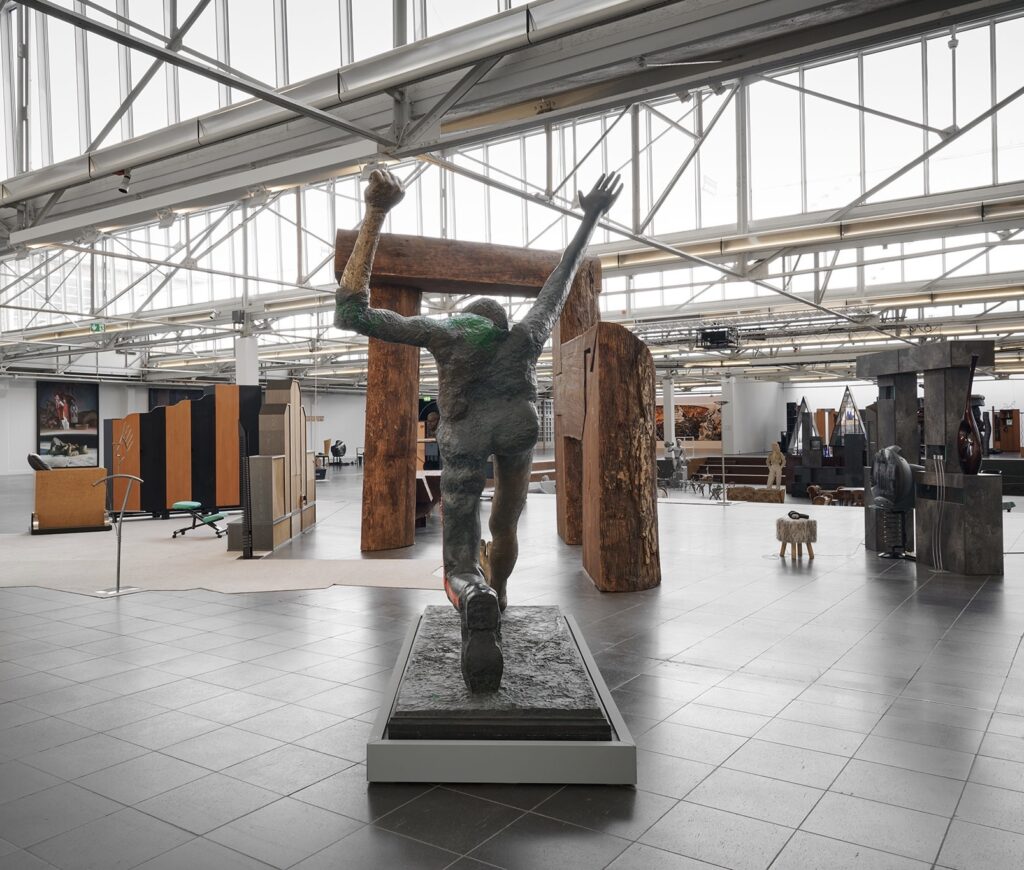
Identity is unattainable. As banal as it may sound, the dissolution of difference that it designates is violent. The word reunification, for instance, is widely used, and yet the prefix “re” suggests an identity between the GDR’s accession to the Federal Republic of Germany in October 1990, and the predecessor state of both of them, namely the German Reich that was divided up by the Allies. Reunification designates a post-fascist nation, an impossible identity. This impossible present of German fascism unfolds in the five complexes of works that Henrike Naumann in Illiberal Lives offers as the starting point of the exhibition cutting across the centre of Aachen’s Ludwig Forum. And it becomes so inescapable because it wells up from our everyday contexts, in interior furnishings, contemporary events, art histories, accessories and everyday rites, as a constant latency. Already in the 1970s, Félix Guattari stated that fascism never ended, but merely changed its societal function.
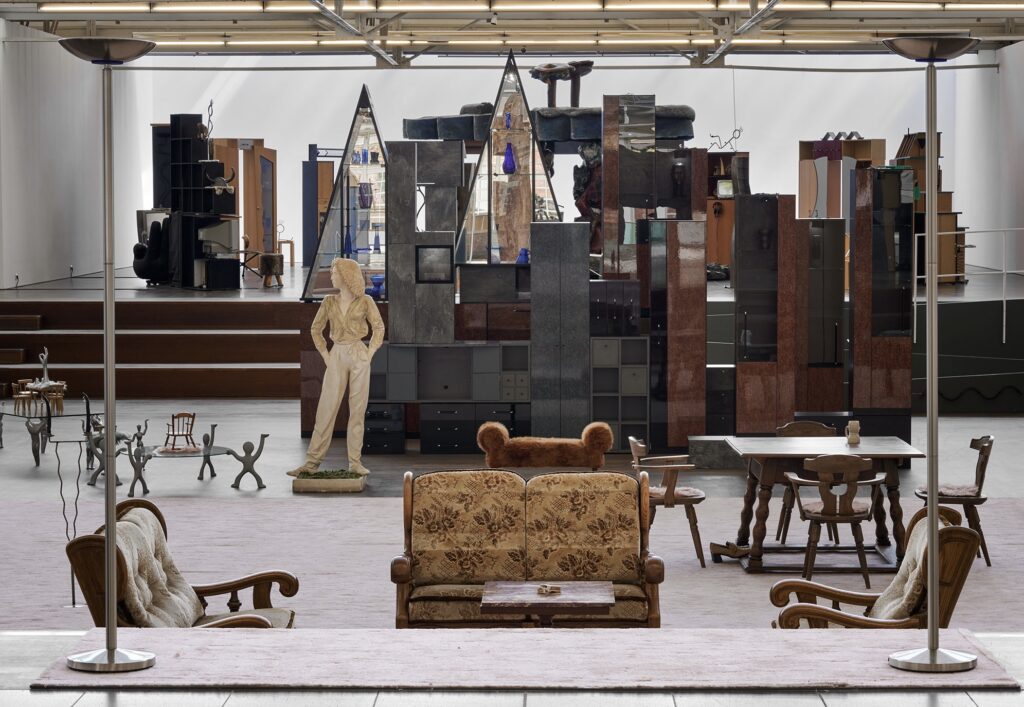
Naumann’s Ruinenwert – Einstürzende Reichsbauten (2019–2023), a furniture landscape on pale pink carpet at the centre of the exhibition hall, combines derivative post-modern designs from furniture stores with rustic-looking wooden furniture, giving off a nationalist nostalgia, and consigns gender clichés of domestic family life into a horizon line reminiscent of the view from Hitler’s Berghof on the Obersalzberg. Here is where Aleksander Rukavishnikov’s Sommer in der Stadt (1972) stands: a sculpture that is part of a series of female figures by Lev Kerbel’s pupil, an enthusiastic state artist otherwise known for heroic national monuments. The fact that it is the generic anonymity of the ostensibly generic ideal female form that here conceals Rukavishnikov’s status as a producer of national aesthetics closely connected through the present day with those governing the Russian state, fits seamlessly into Naumann’s domestic gender order of post-fascism. We are moving through a living landscape of the national private sphere, in which fascism quite literally constitutes the horizon of the subsequent generations, both here and there. While at Munich’s Haus der Kunst in 2019 it was the original furniture from the initial 1938 furnishings, in 2023 Naumann got in contact with people selling furniture they’d inherited from the Nazi period by using classified ads on eBay. A wooden cupboard bought in Nuremberg is dedicated to Uncle Hansel, killed in action in 1941; in this way, German fascism remains engraved in West German post-war furnishings.
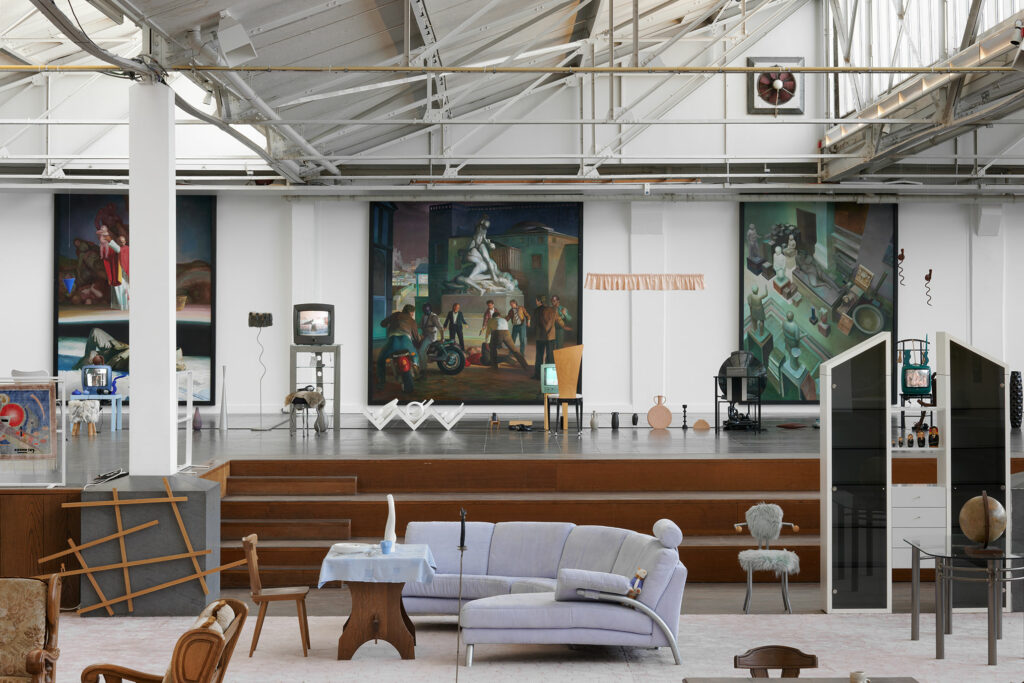
West of this, Naumann positioned Vincent Desiderio’s large-format triptych Obsolescence and Perpetuity (1987) as the background to her installation Evolution Chemnitz (2020). Desiderio’s understanding of painterly Realism treats sceneries of the twentieth century in the artistic style of the nineteenth; ultimately, a nationalism from a different era. Naumann’s five videos positioned in front of it were shot with an actor in various rooms of the Elisenhof in Chemnitz, a hotel located in the same building as the Thønsberg, a clothing shop for the right-wing scene. The actor mimes five characters, men who pass through moments of political turmoil in Chemnitz: 1919, 1945, 1992, 1998 and 2018. These dates do not follow a selection reflecting Naumann’s own position on the events’ political orientation. Instead, the connection is that they all describe local battles about the national form. But here, (nostalgic) naturalism and (political) realism diverge; their power clashes in regional life. Thus, for some forty days in 1945 there existed an anti-fascist Free Republic of Schwarzenberg; from 1998 onwards, the three core members of the extreme-right terrorist group the NSU (National Social Underground) holed up in Chemnitz for a prolonged period, able to feel secure there; and in 2018, the right-wing terrorist group “Revolution Chemnitz” was founded after a fatal knife attack at a town fair. The knife attack took place in the immediate vicinity of the Karl Marx monument sculpted by Lev Kerbel, by whom Naumann mounts two works from the Ludwig Forum collections into Illiberal Lives.
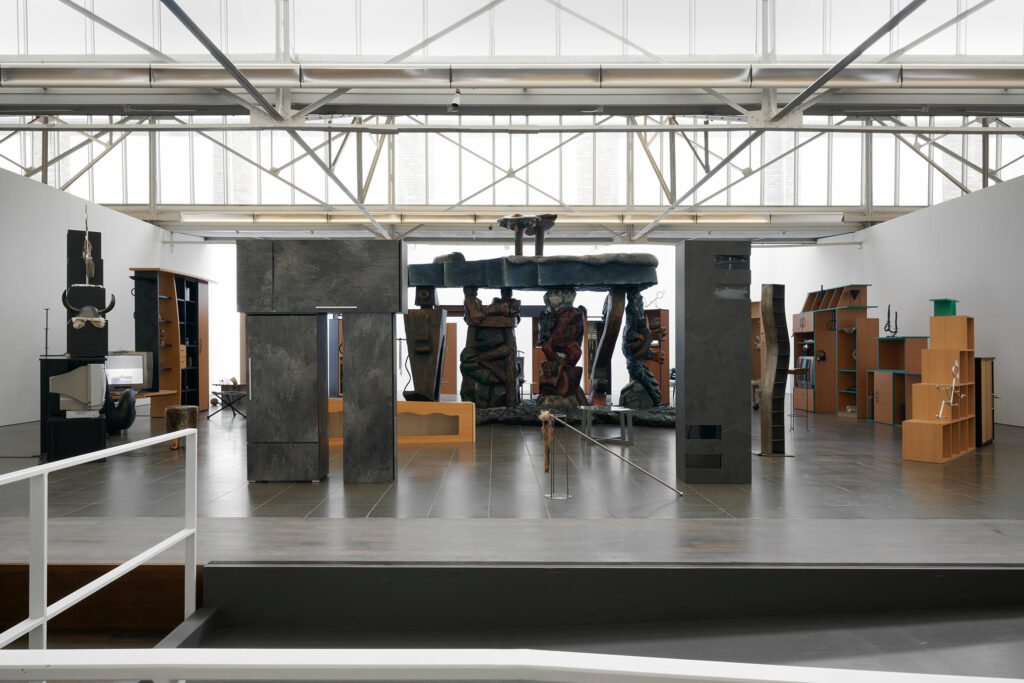
Naumann’s works are both politically and artistically so firm because they do not symbolically distinguish between national and individual history. The representational forms of national assertions of identity of which Jörg Immendorff’s Naht (Brandenburger Tor – Weltfrage) from 1982-83 are composed, where his gigantic painted bronze sculpture is integrated into Naumann’s installation Das Reich (2017) in the rear part of the exhibition hall, inadvertently become artistic, national private folklore. Naumann’s work, in which the furniture is arranged in a circle like menhirs, takes a closer look at the self-styled “Reich Citizens”, an armed group that does not recognize the unification treaty concluded in 1990 between the GDR and the FRG—and thus declares the German Reich unended, draws its own borders, issues its own passports. But the horizon of post-fascism refers to the ubiquity of national hegemonies within all citizens’ constitution, not only where they insist that the German Reich lives on, but also where its continued existence within in the FRG and the GDR was denied, and where rather than confronting it, nostalgia again takes hold, for instance when, in Immendorff, Rosa Luxemburg appears as a martyr in bronze, fallen out of her time.

For those viewers of Naumann’s complexes of works who grew up in one of the two German states—which applies to the four curators of Illiberal Lives as it does for Naumann herself, yet holds true for hardly any of the exhibiting artists—it is impossible not to find oneself in Naumann’s rooms. The articles of furniture, assembled second-hand locally, in which she installs us just as she installs the “Reich Citizens” and the NSU, are too generic for the fittings in one’s parents’ houses, in the youth centres, church meeting rooms and children’s rooms where we spent time; the masses of endless copies of design objects in the furniture stores’ range of goods are too consistent for us to be able to escape Naumann’s identification. And to formulate an identification from which I exclude myself creates the figure of the Other, a standard of nation-state border controls, both outwardly and inwardly.

In Aachen, Naumann intensifies this horizon by using the domestic and foreign relations of the collections at the Ludwig Forum: there are in total seven works from the Aachen fund in her installations, including the sculptures by Jörg Immendorff, Magdalena Jetelová, Lev Kerbel and Aleksander Rukavishnikov. With the Ludwigs’ interest in “Eastern Art”, and their selection, Naumann reveals another aspect of West German culture. Ultimately, the look into the collections in Aachen is a logical expansion of Naumann’s examination of the consumerist social mark of the times of West German everyday life, and its expansion to the formerly socialist neighbouring state. In her own works, this time period may be taken up starting at unification in 1990, but in its elements, as in the Ludwig Collection, the understanding of this time always goes back by necessity to its pre-history.
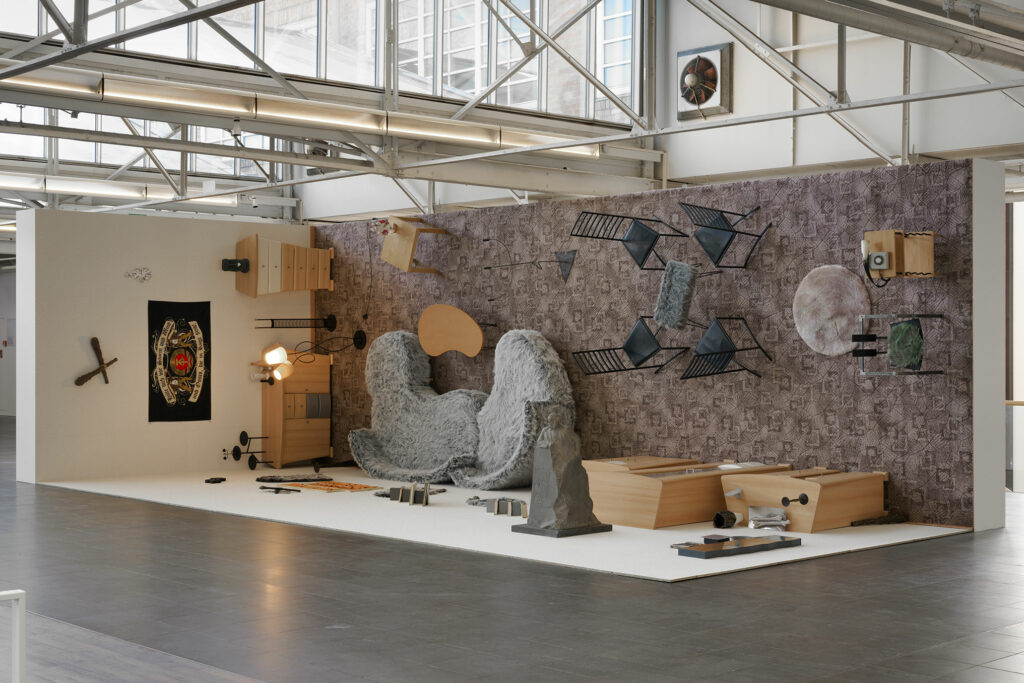
Ostalgie (2019-21), set up here vis-à-vis Evolution Chemnitz, shifts the viewers’ perspective and makes the horizon sink to the ground. The carpet and furniture wander up the wall, and the furniture and interior decor elements topple over from their present. Naumann intersperses the “ostalgic” interior space with nostalgic motifs, mass culture primitivisms, comic-like Stone Age patterns. The reference to the East as a developing country, seen in an exemplary way in the so-called “Buschzulage” [an “outback” bonus] for West German civil servants transferred to the East in the 1990s, encounters a socialist figuration in the work by Kerbel which Naumann places next to it, a model of a Marx monument for Moscow, an art form that in western art history was interpreted first and foremost as a nostalgically tinged lack of development.
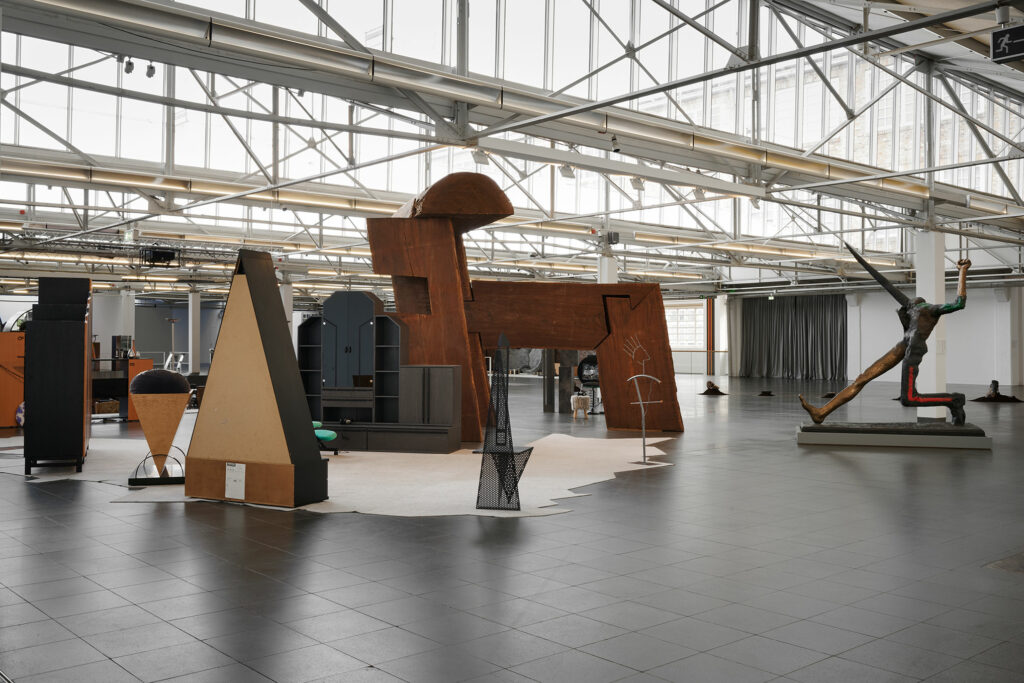
In 2000 (2018-22), the work placed in the entryway to the exhibition space, the unification and its aftermath are itself the departure point for the work; Birgit Breuel’s career, as president of the Treuhand starting in 1991, and as Commissioner-General of the EXPO 2000 Weltausstellung in Hanover in 2000, becomes the iconic bracket of an immiseration through capitalisation that encompassed the East, and which, in the failed Expo, displayed the provincialism of the West German economic system. In Wolfgang Mattheuer’s Jahrhundertschritt (1983-85), the federal citizen is compressed into a schizoid militarist in painted bronze. He strides through Magdalena Jetelová’s outsized woodwork Der Setzung anderer Seite (1987), the tree trunks left almost completely as is, only roughly processed. She compels the visitor to the exhibition to take literally entering into the artworld. Here we enter Illiberal Lives, stand in front of Naumann’s Traueraltar Deutsche Einheit (2018), crowned by Kerbel’s second work in the exhibition: the Portrait Prof. Ludwig (1983). After concluding the cooperation treaties in the 1970s, Ludwig’s “Trinkfix-Schokolade” was delivered to GDR schools, and a monopoly-like access to GDR art, which had no market, was established. Already in 1979 Ludwig showed his “Art from the GDR” in Aachen, an unprecedented appreciation of state art in the East, united in advance by nationally negotiated art consumption.

Text: Kerstin Stakemeier
Photos: Mareike Tocha
Podcast 30 Minuten Kunst – Die radikal guten Fragen der Künstlerin Henrike Naumann
Go to home